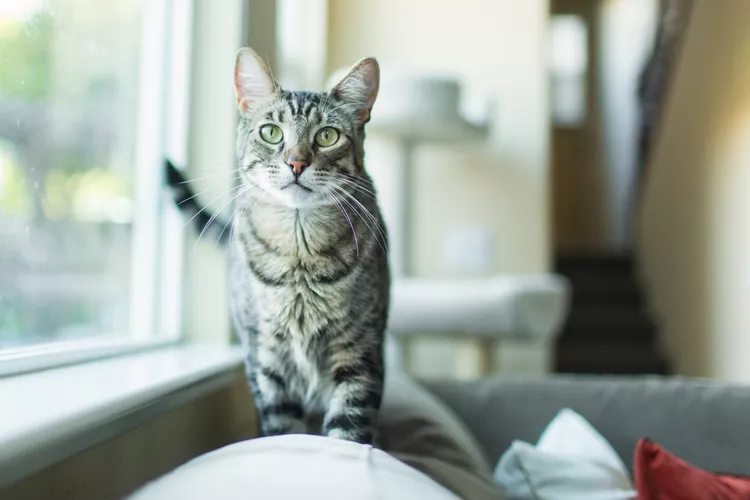Understanding How Cats Speak Through Ear Movements

Cat language goes beyond the vocalizations that typically include hisses, growls, chattering, and meows. Nonverbal language such as tail talk offers many advantages over vocalizations. For example, sounds give away a cat’s location while posturing can’t be overheard. To many owners' surprise, feline communication is done in large part through a cat's ears, providing tons of useful information regarding a cat's mood or next course of action.
Various Types of Nonverbal Language in Cats
The silent semaphore language of cats is done via facial expressions and body positions and movements. A cat's eyes can show the inner feelings of the pet.
For example, cats that are content and happy tend to have eyes that are wide open or somewhat closed if they are very relaxed. Cats who are currently at ease may create eye contact and hold a gaze with their owner for a few moments. Cats that are either fearful or feeling aggressive will often have dilated pupils.
Luckily, owners can read a cat’s mood in additional forms of body language, such as by the simple way his or her cat holds their ears. Below are four different ways that cats express their feelings through their ears, from emotions like curiosity and uneasiness to agitation and fear.
Curious
Forward-facing ears express interest. This also serves to point the funnel-shaped pinna (external ear flap) toward interesting sounds, to gather as much information about the situation as possible. Owners may notice that even during cat naps, their kitty points those ears toward even the most subtle noises.
Uneasy
As a cat feels threatened or uneasy, ears turn toward the side. They look a bit like airplane wings jutting from each side of kitty’s head. This may help buffer any upsetting sounds. Sideways-facing ears also are more protected. Consider “airplane ears” to be an early warning to back off and stop whatever has prompted the cat to feel threatened.
Agitated
Flickering ears may indicate rising agitation. The sideways-facing ears flutter or vibrate very quickly, in reaction to high arousal. If this persists it could also be a sign of a health problem. If the dog, person, other cat causing the arousal does not go away, the cat may progress to threat or attack.
Angry or Scared
Fearful or angry cats flatten ears tight to the head or position them backward. This keeps the ears out of the range of claws and teeth, in preparation for either fight or flight. Cats with slicked-back ears may attack if their assailant ignores the warning.
Ears are a kitty barometer that can help owners anticipate and avoid potential problems.